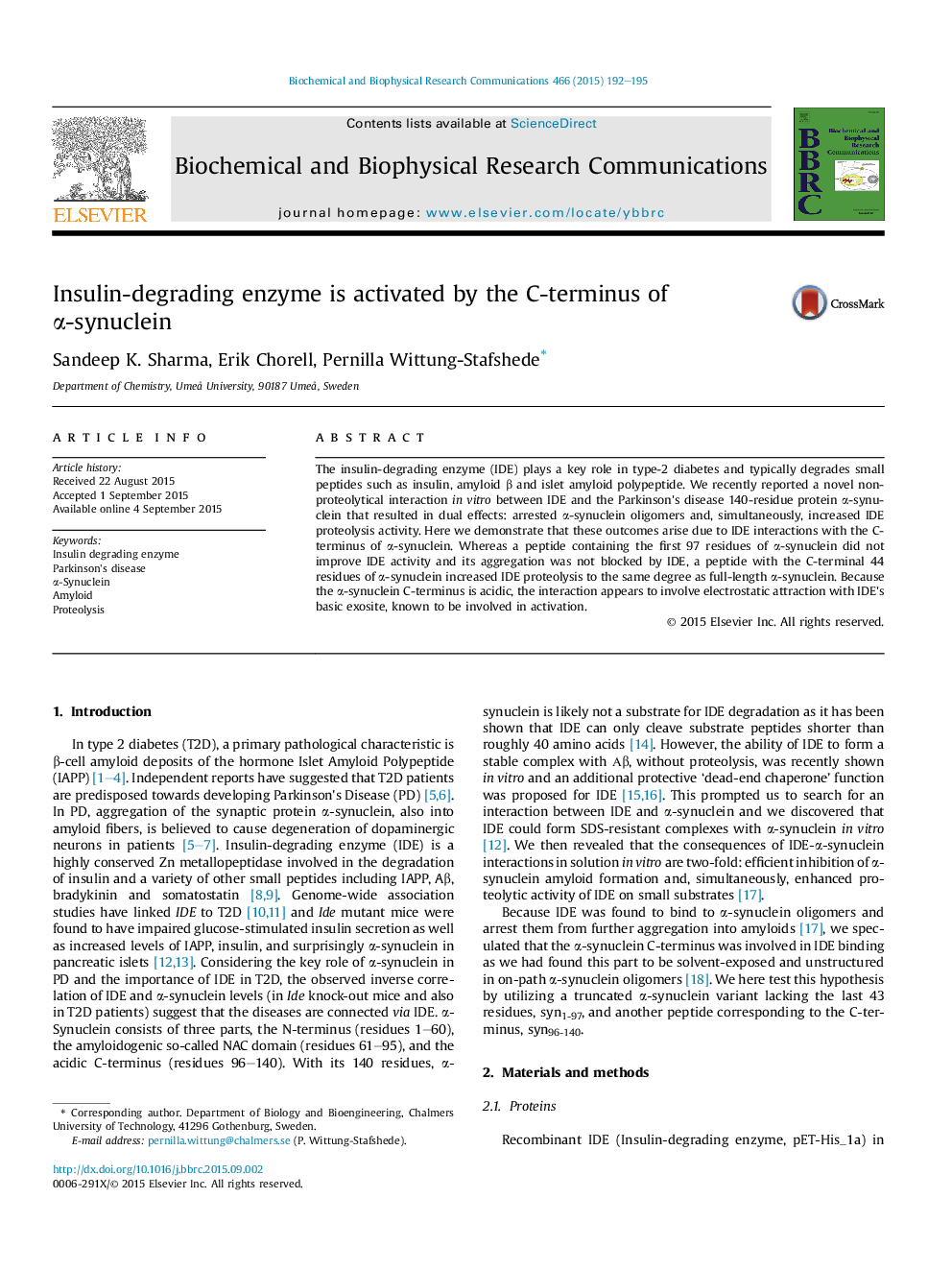| کد مقاله | کد نشریه | سال انتشار | مقاله انگلیسی | نسخه تمام متن |
|---|---|---|---|---|
| 1928061 | 1050309 | 2015 | 4 صفحه PDF | دانلود رایگان |

• Insulin degrading enzyme (IDE) becomes more active in presence of the C-terminus of alpha-synuclein.
• IDE cannot inhibit amyloid formation of alpha-synuclein variant lacking the C-terminus.
• IDE activity is not increased by alpha-synuclein variant lacking the C-terminus.
• Electrostatic attraction between acidic C-terminus and basic IDE exosite is proposed as driving force.
• Binding to the alpha-synuclein C-terminus explains why IDE interacts with synuclein oligomers.
The insulin-degrading enzyme (IDE) plays a key role in type-2 diabetes and typically degrades small peptides such as insulin, amyloid β and islet amyloid polypeptide. We recently reported a novel non-proteolytical interaction in vitro between IDE and the Parkinson's disease 140-residue protein α-synuclein that resulted in dual effects: arrested α-synuclein oligomers and, simultaneously, increased IDE proteolysis activity. Here we demonstrate that these outcomes arise due to IDE interactions with the C-terminus of α-synuclein. Whereas a peptide containing the first 97 residues of α-synuclein did not improve IDE activity and its aggregation was not blocked by IDE, a peptide with the C-terminal 44 residues of α-synuclein increased IDE proteolysis to the same degree as full-length α-synuclein. Because the α-synuclein C-terminus is acidic, the interaction appears to involve electrostatic attraction with IDE's basic exosite, known to be involved in activation.
Journal: Biochemical and Biophysical Research Communications - Volume 466, Issue 2, 16 October 2015, Pages 192–195